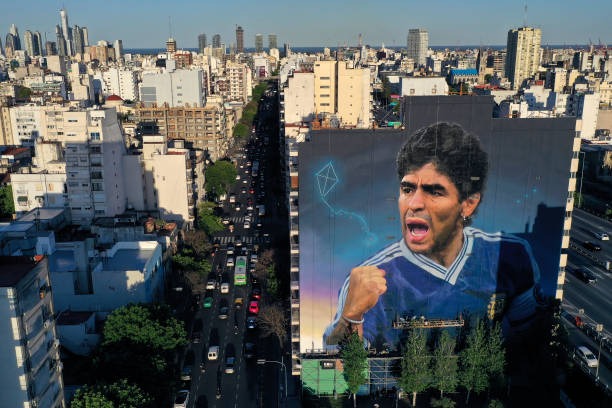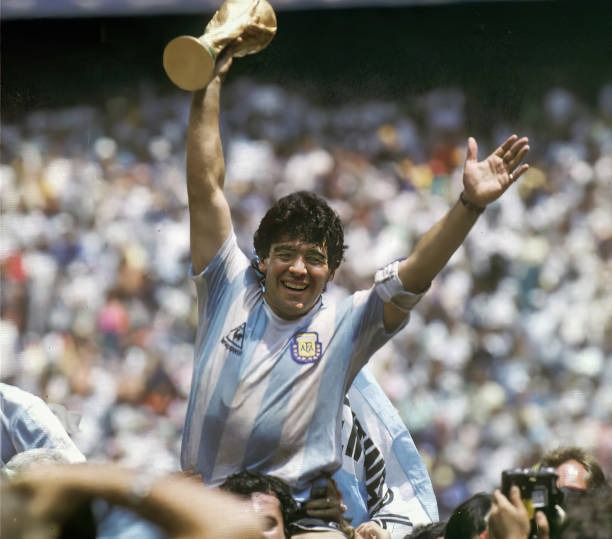Introduction: The Eternal Enigma of Diego Maradona
Diego Armando Maradona wasn’t just a footballer; he was a force of nature. From the slums of Villa Fiorito to lifting the World Cup in 1986, his story blends divine talent with human frailty. Revered as a god in Naples and a hero in Argentina,Diego Maradona life transcended sport, embodying triumph, controversy, and redemption. This article unpacks his genius, debunks myths, and celebrates the legacy of a man who turned football into art.
The Rise of a Prodigy: From Villa Fiorito to Global Stardom
Early Life and Humble Beginnings
Born on October 30, 1960, in Buenos Aires, Maradona grew up in poverty. His prodigious talent emerged early—he juggled oranges in street games and joined Argentinos Juniors at age 15. By 16, he debuted for Argentina’s national team.
Key Milestones:
- 1976: Professional debut with Argentinos Juniors.
- 1981: Transferred to Boca Juniors, winning the Argentine Primera División.
- 1982: Joined FC Barcelona for a then-world record £5 million.
The Barcelona Struggles
Injury and disputes plagued Maradona’s time at Barcelona. A brutal tackle by Athletic Bilbao’s Andoni Goikoetxea in 1983 fractured his ankle, sidelining him for months. Despite winning the Copa del Rey, clashes with management led to his 1984 transfer to Napoli.
The Napoli Revolution: Turning Underdogs into Champions
When Maradona arrived in Naples, the city was a Serie A minnow. Within seven seasons, he transformed them into legends:
- 1987: First Serie A title.
- 1989: UEFA Cup victory.
- 1990: Second Serie A title.
Economic & Cultural Impact:
Maradona’s presence boosted Napoli’s economy. Merchandise sales soared, and match attendance doubled. Locals famously hung banners: “You may not know our mayor, but you know Maradona.”
1986 World Cup: The Pinnacle of Genius
The 1986 World Cup in Mexico cemented Maradona’s godlike status. In the quarter-final against England, he scored two of football’s most iconic goals:
- “Hand of God”: A controversial handball goal.
- “Goal of the Century”: A 60-meter dribble past five defenders.
Argentina won the tournament, with Maradona providing 5 goals and 5 assists. FIFA later voted him the best player in World Cup history.

Controversies and Demons: The Human Side of a Legend
Maradona’s life off the pitch was turbulent:
- Substance Abuse: Battled cocaine addiction, leading to a 15-month ban in 1991.
- Legal Issues: Faced tax evasion charges and ties to organized crime in Naples.
- Health Struggles: Suffered heart attacks and obesity-related issues before his death in 2020.
Yet, his resilience endeared him to fans. As biographer Jimmy Burns noted, “Maradona’s flaws made him relatable—a saint and sinner in equal measure.”
Coaching Career and Later Years
Post-retirement, Maradona coached Argentina (2008–2010), leading them to the 2010 World Cup quarter-finals. His fiery passion mirrored his playing style but lacked tactical discipline. Later, he managed clubs in UAE and Mexico, with mixed results.
Stadio Diego Armando Maradona: A Testament to Immortality
In 2020, Napoli renamed their stadium Stadio Diego Armando Maradona to honor his impact. The venue, hosting 54,000 fans, symbolizes his eternal bond with the city.
Diego Maradona’s Legacy: Why He Still Matters
- Cultural Icon: Inspired films, songs, and murals worldwide.
- Influence on Players: Lionel Messi, Sergio Agüero, and Paulo Dybala credit him as their idol.
- Social Advocate: Campaigned for underprivileged communities, reflecting his roots.
Frequently Asked Questions (FAQs)
Q: How tall was Diego Maradona?
A: Maradona stood 5’5” (165 cm), using his low center of gravity to outmaneuver defenders.
Q: Did Diego Maradona have children?
A: Yes, including Diego Maradona Jr., born in 1986. He briefly pursued football but retired early.
Q: Which clubs did Maradona play for?
A: Argentinos Juniors, Boca Juniors, Barcelona, Napoli, Sevilla, and Newell’s Old Boys.
Q: Why is Napoli’s stadium named after him?
A: To honor his role in transforming the club into a Serie A powerhouse.
Q: What was Maradona’s coaching style?
A: Emotion-driven, emphasizing attacking play but criticized for lacking structure.
Conclusion: The Immortal Number 10
Diego Maradona’s legacy is a tapestry of brilliance and imperfection. He remains football’s ultimate paradox—a man who reached celestial heights yet never lost touch with his gritty origins. As the sport evolves, his myth endures, reminding us that genius is never flawless, but always unforgettable.
Sources:




Pingback: Johan Cruyff: The Visionary Who Transformed Football Forever -